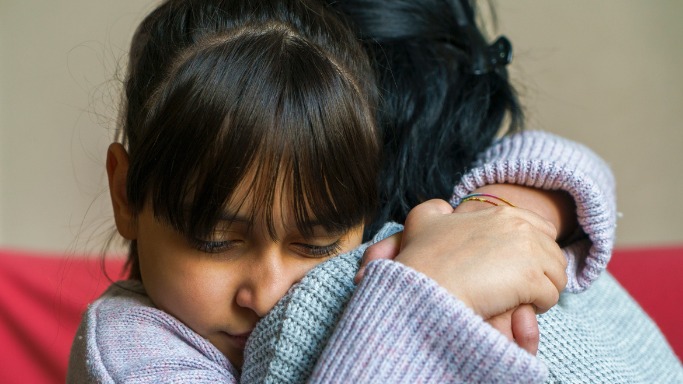Imagine a newborn baby. His father is long gone. His mother is addicted to methamphetamines and suffering from mental illness. A loving foster family cares for the child for the next three years and wants to adopt him, but a cousin who has never met the boy intervenes and wants him to live with her.
What should the authorities do? Allow the boy to remain with the adults he knows and trusts? That’s an option most people would choose.
Or, determine his placement according to skin color, as a cohort of child welfare experts and activists suggests?
The argument of these “experts” rests on challenging “attachment theory,” a pillar of developmental psychology.
Attachment theory is based on a well-researched phenomenon in humans and primates. It describes the bonds that infants and young children form with caregivers who are essential to their survival and development. A child who perceives the “attachment figure” to be attentive and nearby feels loved and secure.
Yet Maleeka Jihad and Jessica Handelman, both social workers, claim that “secure attachment theory does not provide any clear direction” for placement and that the theory is a “tool to justify the separation of families.” It is, they maintain, a manifestation of “racism in psychology.”
Their article, “The Weaponization of Whiteness,” which appears in the law journal published by the National Association of Counsel for Children, argues that because studies on attachment are based on elite whites, or participants from Western, educated, industrialized, rich, democratic societies, “They are not only unrepresentative of humans as a species, but on many measures, they are outliers.”
This philosophy is part of a larger effort found in schools of social work, medical schools and the Department of Health and Human Service’s Children’s Bureau, and expressed by academics, activists and government officials opposing so-called “forced cultural assimilation” — a child of one race nurtured by a family of another race.
In a recent issue of the journal Attachment and Human Development, which is devoted entirely to the issue of how human attachment depends on the “context” of a child’s race, psychologists Jessica A. Stern, Oscar Barbarin and Jude Cassidy argue that their field should “leverage and extend attachment-related work to advance anti-racist perspectives in developmental science.”
As part of this “anti-racism” effort, many child welfare experts and academics have embraced the idea that Black, Hispanic and Native children have different needs from white or Asian children. At the core of the challenge to attachment theory is the claim that that nonwhite cultures “emphasize and embrace the needs of the group as a whole over the needs of an individual.” Thus, children who are born into a “collective culture” should be raised by people who belong to a collective culture — even if that means taking them away from a family that has loved the child for years.
But even assuming that these broad stereotypes are true, what does this have to do with a newborn infant?
“Black babies and white babies are not born with different styles of attachment encoded in their DNA,” says Steven Berkowitz, a child and adolescent psychiatrist at the University of Colorado. “They will bond with whoever loves and cares for them.”
And we disrupt that bond at the child’s peril.
“The rupture would annihilate his inner world, leaving him feeling helpless,” says psychologist Ira Moses, a psychoanalyst in New York City. “It’s as if his parents had died.”
The experience could establish an enduring template of the world as an insecure place, where loved ones can suddenly disappear. “Compared to relationships that occur in later childhood, interactions with early caretakers have a disproportionate influence on the development of a child’s sense of self and security,” Moses said.
While the debate over race-concordance in adoption is not new — the National Association of Black Social Workers has opposed transracial adoption since the 1970s — the use of attachment theory to bolster the race-based approach is novel, and destructive.
Attachment needs are universal: They represent an evolutionary adaptation by which infants of humans and primates can survive to reproductive age. Once a child of any race forms primary attachments to caregivers of any race, those bonds are profoundly meaningful.
It is easy to dismiss so many of the trendy philosophies made by academics embracing the cause of anti-racism. But in the field of child welfare, these claims — and the proposed remedies — bleed dangerously into the real world. Social workers and judges have to make decisions about the best placements for children whose parents are unable or unwilling to care for them. Revisionist psychology should never require that minority race children be ripped away from longterm, loving caregivers to satisfy an ideological mission.

